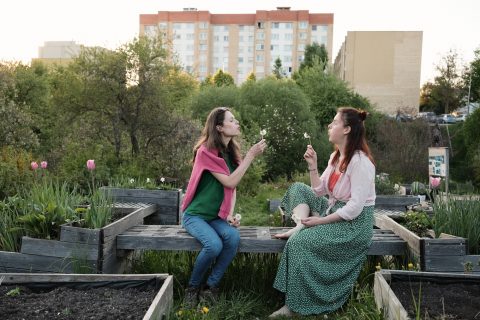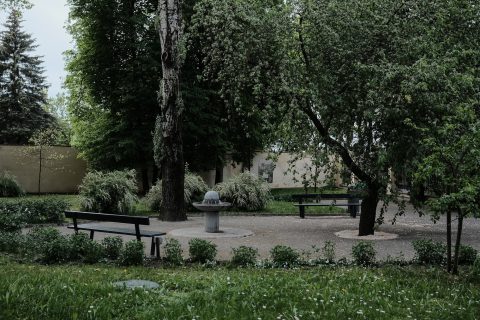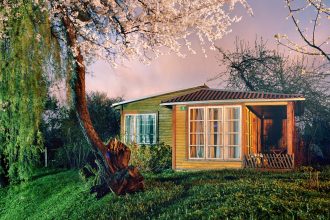For me, the beauty of Kaunas is that it only takes 15 minutes from the city center to find yourself in a natural oasis of peace. There is no shortage of choices. You can go to Ąžuolynas (Oak Grove), Kalniečių Park, and others, but how often do you go to Aukštoji Freda Manor, where the VMU Botanical Garden, celebrating its centenary this year, is located?
The botanical garden in Kaunas was created as a centre for botany studies for all of Lithuania. The main goals have remained the same to this day, but, apart from all that, it is simply fun to visit the large areas of the former manor and admire the flourishing nature. While walking around with Dr. Nerijus Jurkonis, the director of the botanical garden, we talked about its establishment, the challenges that arose during its existence, and the main works carried out there.

Nerijus, you are an ecologist, environmentalist, Doctor of Biomedical Sciences, director of the Vytautas Magnus University Botanical Garden, and lecturer at the Faculty of Natural Sciences of VMU. Tell us what led you all the way to the manor of Aukštoji Freda?
As a schoolboy, I really liked natural sciences. I remember that there were these special posts that would buy up medicinal herbs, so I would collect the herbs, dry them, and then sell them at those spots. I think this also had an impact: you had to get to know the plant and know which part of it to collect.
And probably the most important impetus was the fact that my father’s brother studied at the Faculty of Forestry at the Agriculture Academy, and eventually became a forester. After that, he sometimes took me for walks in the forests. A little later, when it was time to choose my studies, my plans included medicine or natural sciences, however, I turned to VMU and finished biology studies. After that, with the emergence of ecology and environmental studies, a master’s degree was waiting for me, so I eventually went in this direction.
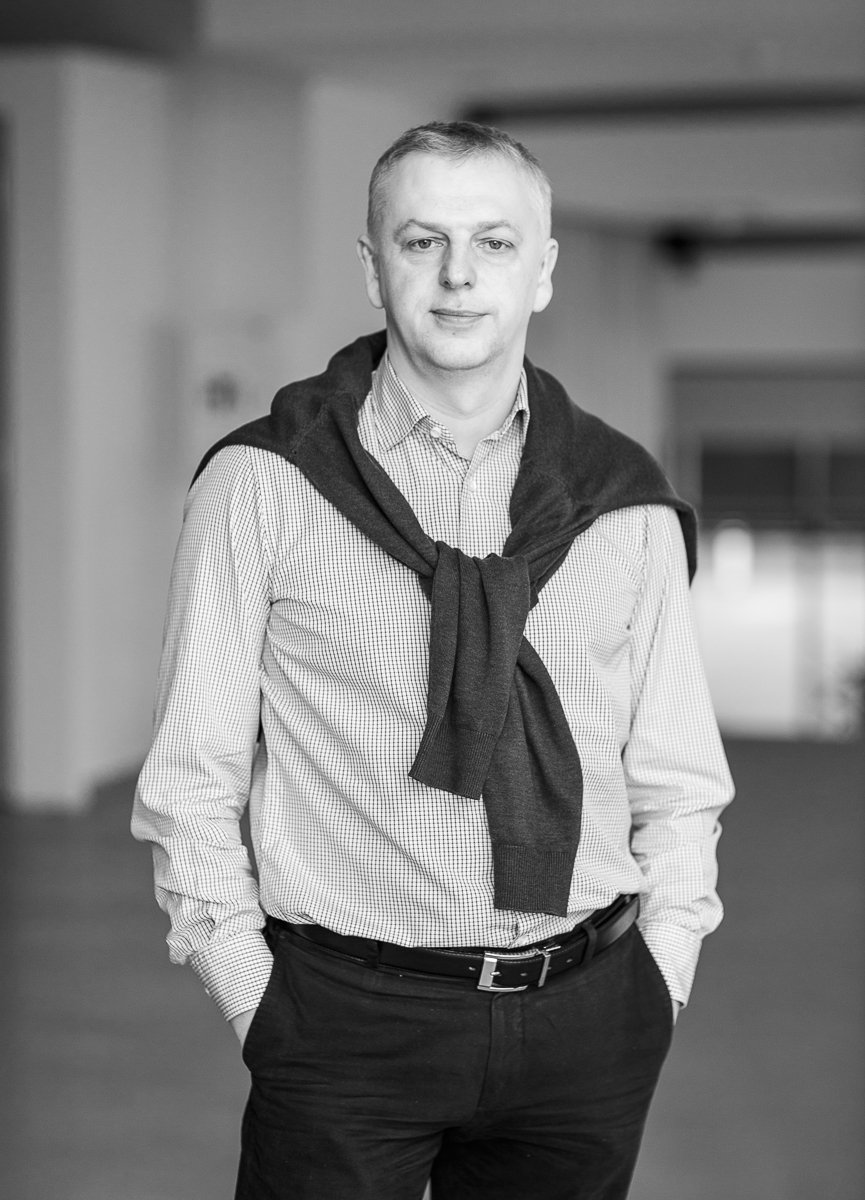
Before coming to work at the Botanical Garden, I was the vice-dean of the Faculty of Natural Sciences of VMU, and a little later, when the current rector, Prof. Juozas Augutis started working, I received an offer to join the team and take over the management of the Botanical Garden.
And why VMU Botanical Garden specifically? What makes it special?
Botanical gardens are oases, especially in the city, if we are talking about urbanized areas, although there are more spaces of a similar nature: parks, flower gardens, and green spaces in general. VMU Botanical Garden has clear boundaries and takes up a part of the former Aukštoji Freda Manor territory.
We don’t just plant plants here, we exhibit them, following certain principles. For example, we have a systematic collection, which is the heart of all university botanical gardens, like a living textbook of botany. There are also plants collected according to the ecogeographic principle: the ones that grow in different areas, for example, in Central Asia, the Far East, or North America. The exotic plants, or the ones that come from a very specific climate (tropical or desert) are studied on an ecological basis in the greenhouse.
In addition, we also have scientific experiments: we ‘torture’ plants. We study how specific plants endure in our conditions, how they tolerate cold, frost, and adapt to the climate. We always try different combinations, we plant, we see how the plants fit with each other, how they grow, and whether they overshadow each other or not. Some of the experiments are unsuccessful, then those plants have to be replaced with others. But that’s what the Botanical Garden is for – it is a kind of base for experiments.
I would like to know more about the beginning of the garden 100 years ago. I have read that Konstantinas Regelis became a full-time professor of Plant Systematics at Kaunas University and started to organize a botanical garden on the territory of the former Aukštoji Freda Manor. Why did this happen at that time, and not earlier or later?
It all happened at the right time for Lithuania. When Lithuania regained its independence, it, unfortunately, lost its capital Vilnius. Kaunas became the capital of the young, restored state, where all institutions moved, and the University of Lithuania was founded in 1922. There was a shortage of specialists in the country, so efforts were made to contact a wide range of Lithuanians spread across the territory of what was then Tsarist Russia or Western Europe. However, not only Lithuanians were invited, but also foreigners. One of those invited was Konstantinas Regelis, who was working at the University of Tartu at the time, a young specialist who was invited by Tadas Ivanauskas to become a professor of botany at the Botany Department.
The Faculty of Natural Sciences is usually accompanied by a botanical garden, which serves as a science base for the studies. When Konstantinas Regelis arrived, he was entrusted with organizing the establishment of the botanical garden. This happened in 1923. The process took some time, as the search for a location was happening. They considered Parodos Hill, where the Kaunas County Public Library is now located, and a site near the Sports Hall. Later, the former site of the Aukstoji Freda Manor was offered and after long negotiations, an agreement was reached.
This year we celebrate the centenary and have two key dates: February 15 and July 8. February 15 is the date on which the VMU Botanical Garden was allocated the territory, and July 8 was the official opening with various guests including President Aleksandras Stulginskis.
Why do you think Regelis was entrusted with the implementation of all this and not someone else?
As I mentioned, at that time there were very few specialists in this field in the country, but they managed to get a hold of Konstantinas, who had both experience and enthusiasm. He was also a Swiss citizen and came from a family of famous botanists: his grandfather, Eduard Regel, was the head of the Imperial Botanical Garden in St Petersburg, his uncles were famous botanists and founders of gardens, and his father was a professor. When he arrived here, the government gave him complete freedom.
Being a Swiss citizen meant that Konstantinas could travel freely around Europe. What’s more, he was able to communicate well because he spoke German, French, and Russian. His work began with a visit to some three dozen botanical gardens in Europe in 1922. He got acquainted with all of them, made contacts, and initiated plant exchanges. In a relatively short time, a botanical garden was established here in Kaunas and grew to the European level of the time.

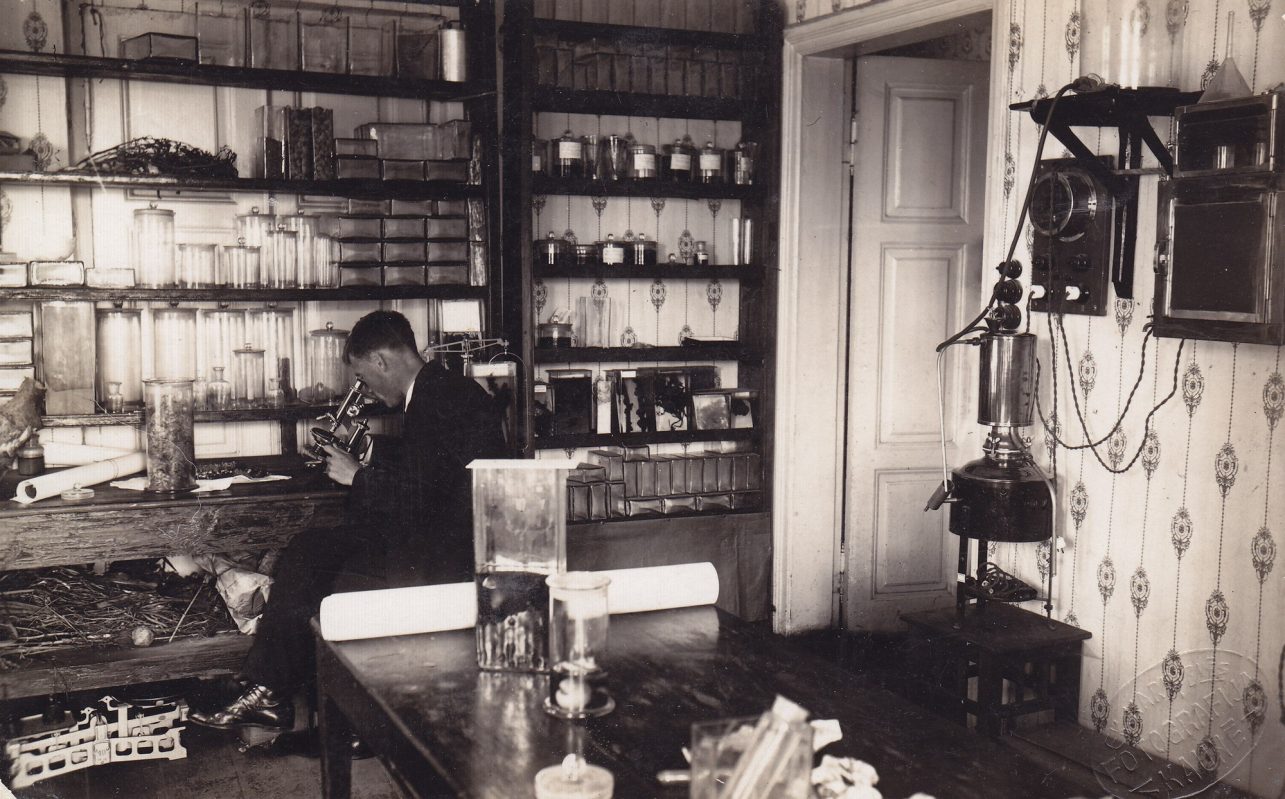
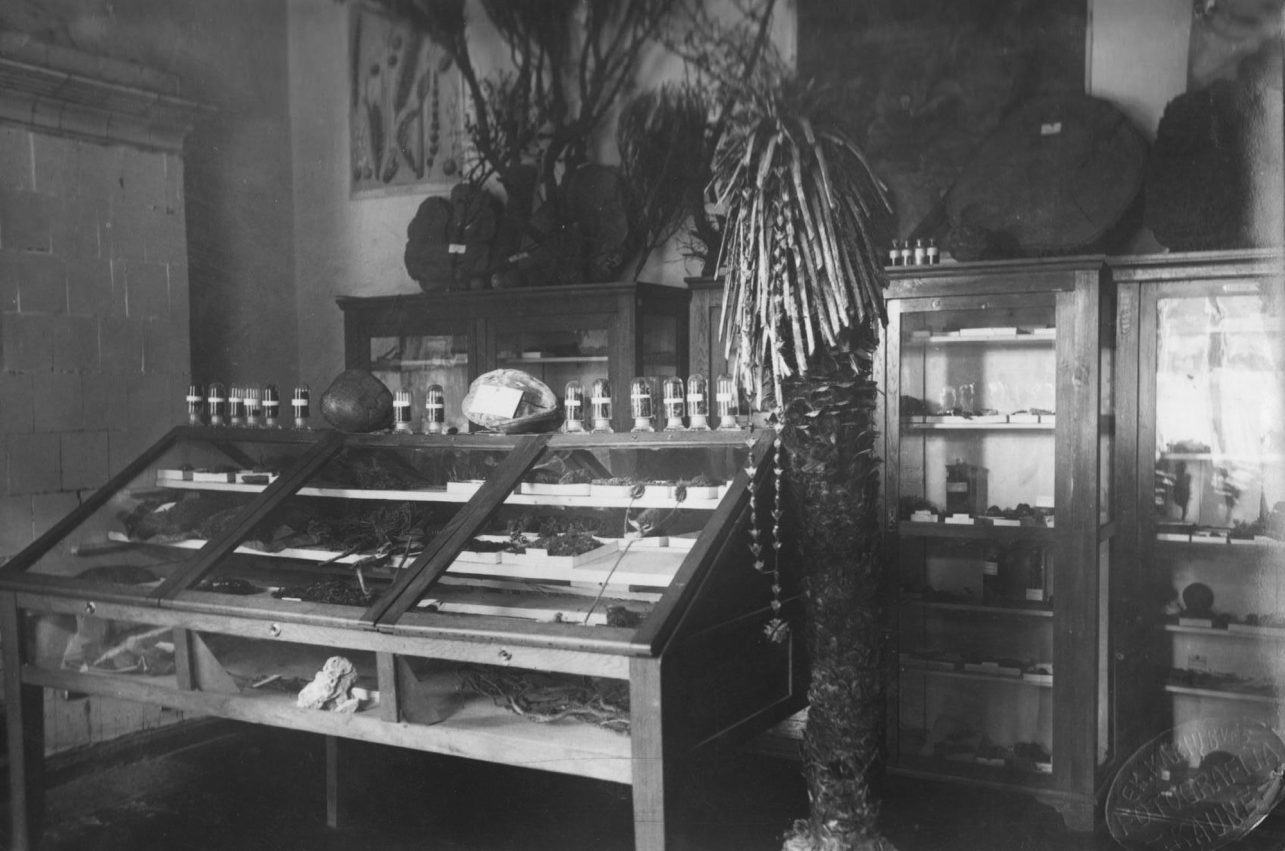
What was the agenda like when the garden was officially established?
In essence, the tasks have not changed too much in terms of garden workers, or curators of collections, because the cycle remains the same. I would venture to say that the most significant change is in the technology. Vehicles are used instead of horses. Maybe there are things we can do more quickly these days – dig a hole with machinery or transport something more easily – but there is still a lot of manual labour.
However, after the First World War, due to fortifications a big part of the garden’s territory was destroyed and those, who maintained it kept finding shells and holes. After the war, time had passed, the bushes had grown, and everything had to be redone – the area was neither beautiful nor clean enough to plant immediately. So, the first year was dedicated to cleaning the territory of the park, the ponds that were overgrown with weeds. Everything had to be tidied and set up.
Were the functions of the VMU Botanical Garden any different during the Soviet period?
The functions of the Botanical Garden changed a lot during the Soviet era. Kaunas no longer had the University of Lithuania, and the garden was no longer a university garden, but belonged to the Botanical Institute of the Academy of Sciences. Its function was oriented towards science and the directions that were approved at the time – especially the introduction of new plants, research, and what was useful for agriculture. At that time, the staff worked extensively with ornamental plants and flowers, took part in exhibitions, and plant selection, developed new varieties, and considered suitability for bouquets.
Today, our research department uses the garden’s collections for a wide range of research. And not only our scientists but the VMU Faculty of Natural Sciences and other institutions as well.
Speaking about the VMU Botanical Garden, VMU Rector Prof. Juozas Augutis said: “The Botanical Garden has gone through ups and downs, threats and risks. I would like to wish it a much calmer next century with fewer perturbations and transitions from one system to another so that we can concentrate on our work and nurture it.” Could you perhaps give us an idea of what exactly the Rector meant by the difficulties?
Let’s not forget the war, changing systems, and other elements that have affected its work. The Botanical Garden had once fallen into decay, it had been partially destroyed and then rebuilt. The restoration of Lithuania’s independence made energy resources more expensive, but it was still necessary to maintain the conservatories, greenhouses, and staff. When funding is unstable, then the whole process becomes very complicated. You cannot tell the plants that we are going to turn down the heating in the conservatory a little bit, bear with us, let’s tighten our belts, it’s temporary. In the meantime, most of the plants may not survive. And without plants, there will be no botanical gardens.
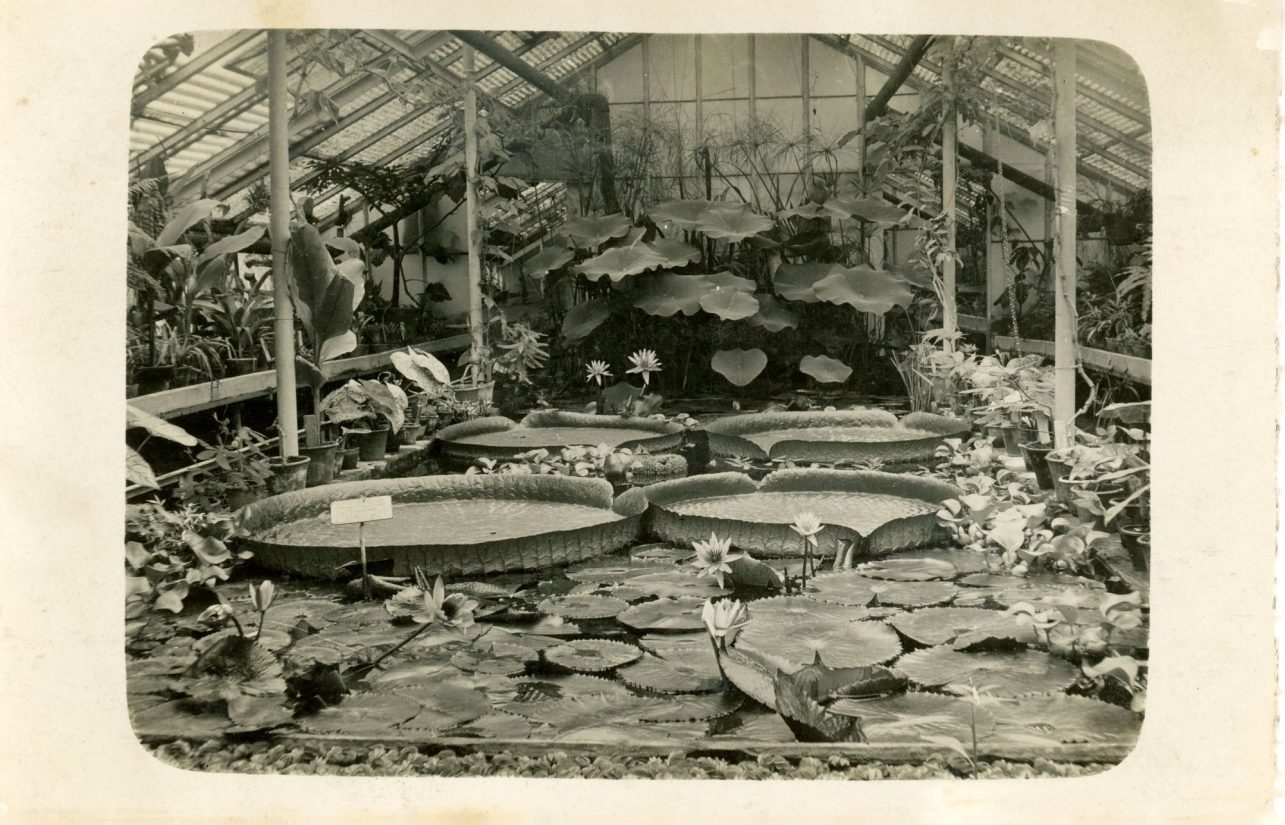
The jubilee slogan of the garden is, “Just like a hundred years ago.” What aspects do you compare?
I wouldn’t say we are comparing. Rather, we want to present what has happened, what has been done, and what we can be proud of, in those 100 years of the botanical garden’s existence. For example, the new varieties that have been developed.
We also want this centenary celebration to be not only external but also internal, for the Garden’s own staff – past and present. On July 7, we will be holding an inside celebration, which will be twofold: we will celebrate both the 100th anniversary and the fact that on this occasion the Lithuanian Post will issue a stamp dedicated to our botanical garden. It seems that if we appear on national symbols, it is important not only for us but also for the whole country.

